Last-Minute NYC Holiday Gift Guide 🎁
We’ve created a holiday gift guide with presents for the intrepid New Yorker that should arrive just in time—


Gangsters, movie stars, and jazz musicians have all lent a hand in shaping the history of 80 St. Mark’s Place. This 1845 rowhouse, sitting just outside the East Village/Lower East Side Historic District, has been a speakeasy, a jazz club, and a moviehouse. The site now serves as Theater 80, a live theater venue. In its many incarnations, the space has hosted show business’ biggest names, from jazz legends like Thelonius Monk to screen stars like Joan Crawford. Some of those celebrities have left their mark outside the theater on New York City’s very own walk of fame, a secret of St. Mark’s Place.
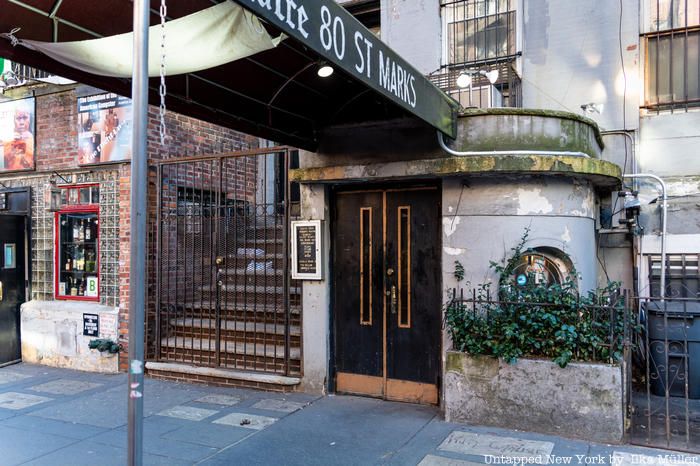
As you walk past Theater 80 and look down, you will see the names of actors and actresses like Dom DeLuise, Myrna Loy, Gloria Swanson, and Kitty Carlisle. These figures of the stage and screen all have a connection to New York City and the performing arts scene here. Recent additions include Joan Rivers, signed in 2011, and actor Alan Cumming, signed in 2014. The signatures are accompanied by a hand or shoeprint and the date or year the imprint was made. DeLuise added a tiny smile to his 1983 marking, and Joan Crawford made her name so big she ran out of room. The tradition of leaving a mark on the sidewalk outside the theater started in 1971.
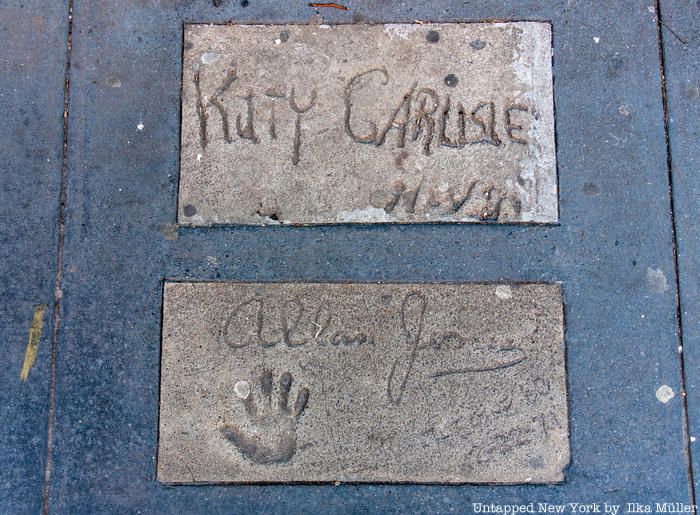
In 1964, actor and aspiring theater owner Howard Otway purchased 80 St. Mark’s from Walter Scheib. Sheib was the proprietor of Scheib’s Place, a nightclub at 80 St. Mark’s that started as a Prohibition-era speakeasy owned by gangster Frank Hoffman. The illegal club catered to the likes of Al Capone, New York City politicians, and police officers who looked the other way. When prohibition ended, Hoffman left New York City, and Scheib continued to run the club independently. In the 1950s, Schieb’s Place turned into the Jazz Gallery. Legends like Harry “Sweets” Edison, John Coltrane, Sonny Rollins, and Frank Sinatra graced the stage.
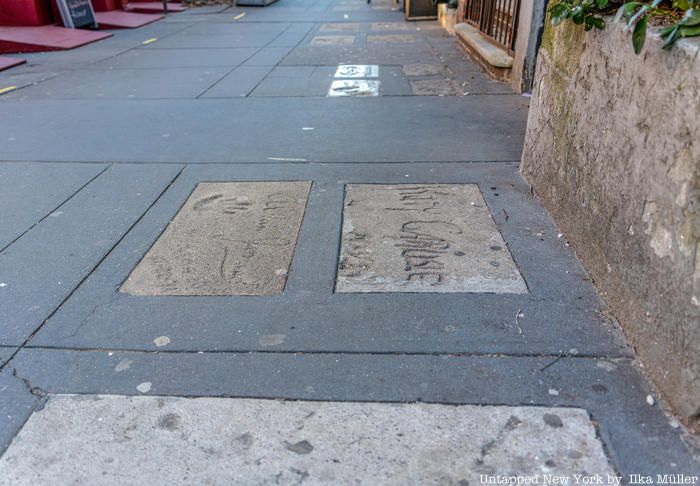
After Otway took over, he turned the nightclub into a theater for live performances. Otway wrote the first play to be performed at the new venue in 1966. Another play that made its debut at Theater 80 was “You’re a Good Man Charlie Brown,” which hit the stage in 1967. After that show’s run ended in 1971, the theater was converted to a film house.
As a movie theater, Theater 80 boasted “resplendently attired ushers, a lobby decorated with movie memorabilia and free penny candy,” according to The New York Times. The theater exclusively screened vintage movies, mainly movie musicals. To drum up publicity for the theater and celebrate its opening, Otway invited some famous friends to make an appearance and leave their mark.
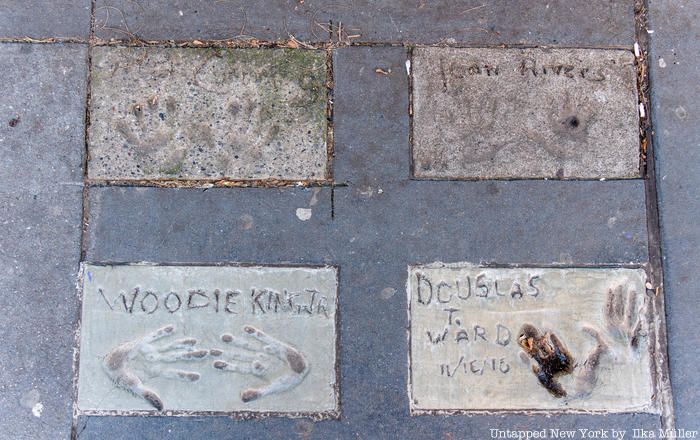
The sidewalk was threatened in the late 1990s when a Department of Transportation inspector deemed the indentations from the signatures, shoeprints, and handprints safety hazards. After much back and forth, the imprints were carved out in blocks and moved closer to the building, away from pedestrian traffic. The signatures were saved, and a new sidewalk was installed around them.
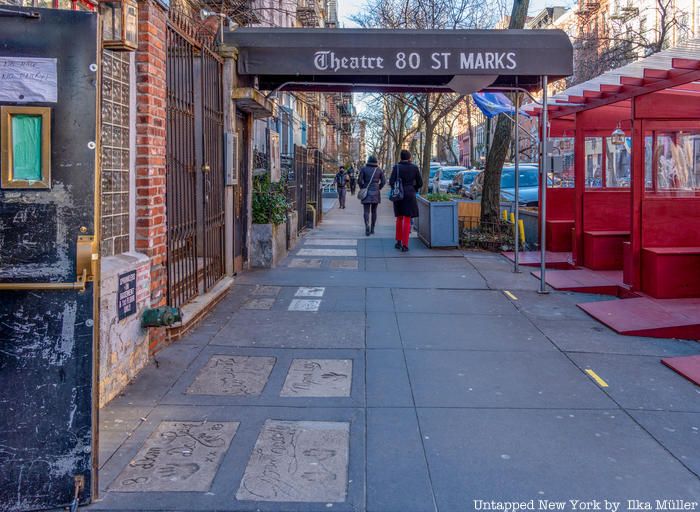
Lorcan Otway took over the theater after his father Howard’s passing. In 1994, in memory of his father, Lawrence brought live production back to Theater 80. Today, the theater still serves as a live performance venue. It is connected to The Museum of the American Gangster and the William Barnacle Tavern, each representing a distinct chapter in the history of 80 St. Mark’s Place.
Next, check out 13 Unique NYC Sidewalk Installations
Subscribe to our newsletter